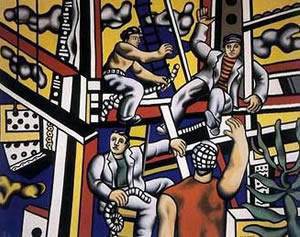

Two photographs by Gustave Le Gray
Master Photographers’ Work of 1840-1940 Highlighted from Rich Holdings of the Metropolitan Museum
Exhibition Dates: June 3 – September 1, 2008 – Exhibition Location: Galleries for Drawings, Prints and Photographs, and The Howard Gilman Gallery, second floor
]]>
Framing a Century: Master Photographers, 1840-1940 tells the story of photography’s first 100 years through the work of 13 key figures who helped shape the aesthetic and expressive course of the medium: Gustave Le Gray, Roger Fenton, Carleton Watkins, William Henry Fox Talbot, Julia Margaret Cameron, Nadar, Edouard Baldus, Charles Marville, Eugène Atget, Walker Evans, Man Ray, Henri Cartier-Bresson, and Brassaï. Opening at The Metropolitan Museum of Art on June 3, 2008, the exhibition will present 10 to 12 iconic works by each of these influential artists, to convey a broad sense of their contributions to photography. Many of the works displayed in Framing a Century are drawn from the acclaimed Gilman Paper Company Collection, which was acquired by the Museum in 2005.
“The exhibition highlights the way in which the recently acquired Gilman Collection meshes perfectly with the Museum’s existing collection to create deep, rich holdings of work by many of the most important masters of the first century of photography,” noted Malcolm Daniel, Curator in Charge of the Department of Photographs. “There are, of course, many other individual masterpieces in the collection by a host of photographers, but this exhibition allows us to sense the full achievement of some of the medium’s greatest artists.”
Framing a Century begins with beautifully preserved works by three photographers of architecture and landscape: the Englishman Roger Fenton (1819–1869), the preeminent British photographer of the 1850s; Carleton Watkins (1829–1916), the consummate photographer of the American West during the 1860s and 1870s, famed for his early views of Yosemite; and the Frenchman Gustave Le Gray (1820–1884), who is now represented in the Met’s collection by more than 40 photographs spanning his entire career, from his early views of Fontainebleau Forest and medieval architecture to his famed seascapes of the mid-1850s and his final pictures, made in Egypt.
The next section includes rare photographs by the inventor of paper photography, William Henry Fox Talbot (1800–1877), whose work in the Metropolitan ranges from some of the first photographs ever made, predating the announcement of photography, through iconic images that were included in Talbot’s groundbreaking photographically illustrated book The Pencil of Nature, to examples of the photogravure process that consumed the latter part of his life.
Also in the second room of the exhibition are works by two masters of portraiture, Nadar(Gaspard-Félix Tournachon, 1820–1910) in France and Julia Margaret Cameron (1815–1879) in England. Nadar, whose keen observation of physiognomy and personality was honed as a caricaturist, was at his best when photographing his literary, artistic, and left-wing political friends, including the writer Alexandre Dumas, the critic Théophile Gautier, and the famous mime Charles Deburau. The subjects of Cameron’s works in the exhibition include her friends—the eminent scientist Sir John Herschel and poet laureate Alfred, Lord Tennyson—as well as family members, neighbors, and staff pressed into service as models in Cameron’s biblical and literary tableaux.
The history, landscape, and streets of Paris and the French countryside are explored in works on view by: Edouard Baldus (1813–1889), whose images include historic monuments, the natural landscape, and the achievements of modern engineers; Charles Marville (1816–1879), best known for photographs commissioned by Napoleon III’s master urban planner, Baron Hausmann, recording the transformation of Paris from a city of narrow streets and medieval buildings to one with grand boulevards and impressive public works that still define the French capital; and Eugène Atget (1857–1927), an artist who spent three decades documenting the look and feel of Paris and the surrounding region, working within a 19th-century tradition, nonetheless celebrated by the Surrealists.
The exhibition concludes with the work of four artists who were significant in transforming photography into a modern visual language. The exhibition’s photographs by Man Ray (1890–1976), for example, will capture the broad creative scope of his work in the 1920s and 1930s, including portraits of fellow artists Marcel Duchamp and Jean Cocteau; documentation of his own ephemeral sculptures; and photographs that reveal his dynamic experimentation with the plasticity of the medium through solarization, photograms, negative prints, and film. Also included is work by pioneering and influential photojournalist Henri Cartier-Bresson (1908–2004); Brassaï (1899–1984), the chronicler of Paris by night; and Walker Evans (1903–1975), best known for his Depression-era photographs in the American South.
Framing a Century is organized by Malcolm Daniel.
The exhibition will also be featured on the Museum’s website, www.metmuseum.org.
Follow us on:


